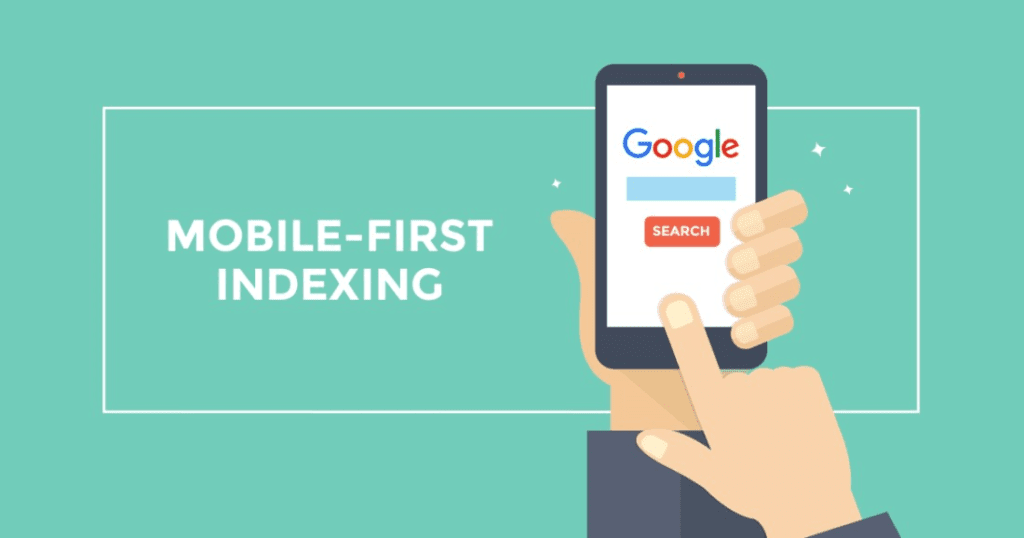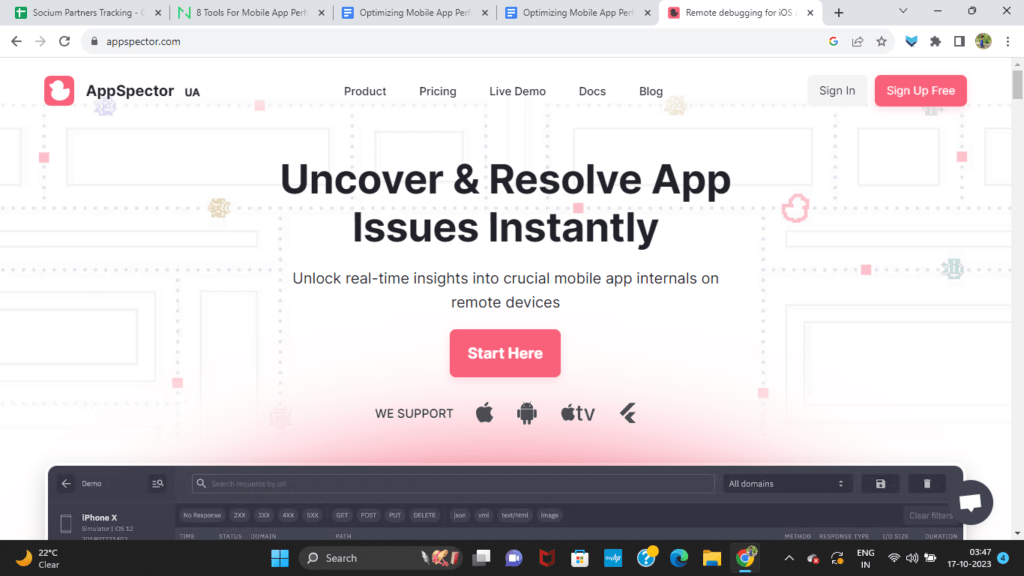Learn how to use the best techniques, tools, and resources for sustaining mobile app performance to bring in maximum traffic, increase conversion rates, and maintain the best SEO practices!
As per the statistics of the third quarter of 2022, Google Play Store contains around 3.55 million apps. On the other hand, the Apple App Store has roughly 1.6 million apps, making the current decade thrive in the technical domain. The success of a mobile application is achieved when great ideas are implemented, and the desired user experience is delivered. To make sure that the app practices what it preaches, it is essential to monitor the app’s performance.
Mobile app performance should be improved for the following reasons:
- The inability to adapt to various network speeds
- Slow load time and unsatisfactory responses
- Poor performance due to bandwidth limitations
- Unusual patterns and potential security issues
SEO best practices involve optimizing mobile app performance to improve its visibility in search engine results. This involves optimizing the app’s title, description, metadata, and relevant keywords. Optimizing an app for SEO can also be done by:
- Adding an Intent Filter to the app that supports URLs and Google search.
- Linking a website to the app.
- Adding the App Indexing API code to index the app in the search engine.
Mobile App Performance: What Does It Entail?
It is by identifying and evaluating the key metrics that you can understand your app’s weaknesses and improve its performance.
- Loading speed: Statistically, reports show that around 70% of mobile app users abandon the app due to its high loading time, thus decreasing the conversion rate. A delayed response as low as 1 second can lead to a 7% conversion loss.
- Responsiveness: A responsive app is styled using an inline style, flexible images, and different layouts to ensure consistent UX. It enables users to have a positive experience irrespective of the device or the screen size, thus increasing the retention rate.
- Battery efficiency: Apps that drain the battery percentage lead to negative user experiences. This makes the users abandon every other app from the same development studio.
Hence, having a user experience (UX) design is an essential aspect of the mobile app development process, as it has a significant impact on the app’s growth rate. Mobile app optimization provides an enjoyable and seamless experience for the users and consequently helps to drive user engagement and retention.
Mobile app SEO is the process of optimizing your app to make it rank higher on the search results page of the App Store or Google Play Store. A good-performing app leads to a positive UX, lowering the bounce rate and increasing engagement. This positively impacts SEO and makes the app rank higher.
Proven Techniques for Boosting Mobile App Performance
Mobile apps form the foundation of a smartphone. Users want a smooth functioning smartphone, and hence, boosting mobile app performance is of crucial importance. Some proven techniques for improving mobile app performance include:
- Code optimization: Code optimization ensures excellent user experience and can be done by:
- Minimizing memory usage
- Using fewer complex data structures
- Minimizing object creation
- Using lazy loading
- Using caching
- Avoiding using too many threads
- Using efficient algorithms
- Using native code
- Optimizing image loading
- Using compression

Source: Headspin
- Image and media optimization: Images and media enrich applications and make them more enjoyable. However, specific image optimization techniques make this process easier. These are:
Using correct image dimensions
Using the correct image format (JPEG, PNG, and GIF)
Compressing the images
Using progressive JPEG
Optimizing image delivery
On the other hand, how videos can be optimized for mobile apps are by
- Using a responsive design
- Encoding smarter
- Using better audio
- Putting links/CTAs in the video’s description
More Close-Ups
- Catering to different attention spans
- Using a compelling thumbnail
- Effective caching strategies: Caching improves the performance of mobile apps and can be done by the following techniques:
- Web caching: It stores images and JavaScript files in the browser’s cache, thereby reducing the app’s load time.
- Data caching: It stores the data regularly accessed by an app, thus reducing the number of times the app is required to make database queries.
- Application caching: It stores the data generated by an app itself and can improve the performance of an app that renders complex views or does calculations.
- Minimizing HTTP requests: HTTP is used by apps to request data and load content. Each request consumes bandwidth and, thus, slows down the app. Effective ways to minimize HTTP requests include combining and minifying CSS and JavaScript files, implementing the lazy loading technique, using Content Delivery Network, and deleting unnecessary images.
- Prioritizing mobile-first design: Mobile-first design prioritizes mobile user experience above all. A few best practices for good mobile-first design are:
- Keep the design simple:
- Use clear and concise language
- Design for touchscreens
- Optimize for speed
- Design for offline use
The Intersection of Mobile App Performance and SEO
Mobile-first indexing: Mobile-first indexing signifies that Google uses the mobile version of content for ranking and indexing. Since most users now browse on mobiles, Google has created an AI crawl bot that judges the content, speed, and overall optimization and determines the SERP ranking.

Source: TGI Technologies
- User Experience Signals: The critical elements of a UX design that can improve SEO performance are intuitive navigation, user-friendly structure, fast loading speed, responsive design, well-structured and relevant content, and clear call-to-action buttons.
- Page Speed and SEO: Page speed is a significant aspect of SEO. A quick-loading page keeps the user engaged. This leads to a good user experience and higher conversion rates and ultimately boosts SEO. Moreover, regarding ranking, Google prefers fast pages over slow ones. Hence, focus should be given on how to make apps load faster.
Tools and Resources for Mobile App Optimization
Mobile app optimization tools show which components of an app are being frequently assessed. They also provide information on user behavior on the mobile app. These tools can be divided into three categories:
- Performance testing tools: Testing the performance of a mobile application is a crucial step in ensuring its high quality and the consequent positive user experience. Many tools contribute to this process. Some examples include Xcode Instruments, Charles Proxy, AppSpector, and LeakCanary.

Source: AppSpector
- SEO tools: Certain SEO strategies required for the higher ranking of mobile apps include:
Keyword research and integration
Implementing app indexing
Ratings and reviews to build credibility
Building quality backlinks
Regular content updates
Optimizing visual assets
- Development frameworks and libraries: The Mobile App Development Framework is a library that provides the necessary fundamental structure to create mobile apps for specific environments. Mobile application frameworks belong to three categories:
- Native apps: Native apps are designed for particular platforms or devices.
- Web apps: Web apps are crafted to deliver web pages on different web platforms for any device.
- Hybrid apps: Hybrid apps are a combination of native and web apps. They can be developed for any platform from a single code base.
Some of the leading Mobile Application Development Frameworks include React Native, Flutter, Ionic, and Xamarin.
Real-World Examples
A few successful mobile apps with performance optimization are:
Kiwi.com app: Kiwi.com is a famous airline ticket seller in Europe. This app allows users to book a flight, train, and bus, removing the chore of switching between multiple apps.
- Sephora app: This app is a hub of beauty and skincare products and features an extensive catalog of beauty products from top brands.
-

Source: BusinessofApps
- Himalaya app: This app is an inspirational content app that features motivational stories and short audio courses. Every week, new stories are added to the app.
Getting a good SERP ranking helps your app to be organically discovered by your users. This leads to more downloads and, consequently, more brand recognition and trust. Neglecting effective SEO can, unfortunately, hide your app in the gamut of app stores and limit its potential. Thus, by mastering SEO for mobile apps, you can make your app stand out and increase its download rate.
Best Practices for Sustaining Mobile App Performance
Mobile app performance can be regulated and maintained by focusing on several factors, such as:
- Continuous monitoring and enhancement: Continuous in-depth app performance audits can help to identify and look out for potential issues before they reach the users. This ensures that your app is high-performing at all times.
- Incorporating user feedback for iteration: User feedback is of crucial importance. By monitoring your app for users’ comments, suggestions, or complaints, you can gain valuable insights about the problems of your app. Addressing these problems can help in improving the overall performance of your app.
- Keeping abreast of SEO updates: Keeping yourself updated about the best SEO practices via newsletters or blogs is an effective way to understand what shall suit your app’s needs. This may lead to the incorporation of specific SEO methods that may help in bringing in lots of traffic to your app.

Source: Growth99
In simple words, mobile app performance determines whether your app is successful or not. To have a well-functioning app that delivers a positive user experience and boosts SEO, you need to optimize your mobile app performance.
Follow the step-by-step guidelines given above to perfect your app’s performance! Use the different mobile app performance testing tools and frameworks to get more professional help. Are you seeking the long-term success of both your app and your brand? These tips and techniques will help you get there!
What strategies have you applied to optimize your mobile app performance? Let us know on Linkedin, Facebook & Twitter!
FAQs
- How can I optimize my mobile app performance?
- IOS and Android app performance optimization can be done via specific techniques such as monitoring performance metrics, optimizing memory usage, optimizing code, utilizing caching techniques, implementing load balancing strategies, minimizing network requests, and using automated testing tools.
- How can I measure my app’s performance?
- An app’s performance can be measured by keeping track of critical metrics such as response time, loading time, latency rate, and error rates. User feedback also provides excellent insights.
- How long will it take to do mobile app performance testing?
- It typically takes around 4-6 weeks to test a mobile application.
- Can I automate the process of mobile app performance testing?
- Yes, mobile app performance testing can be automated with the help of specific tools such as Selenium, Appium, Katalon Studio, and Cucumber.








